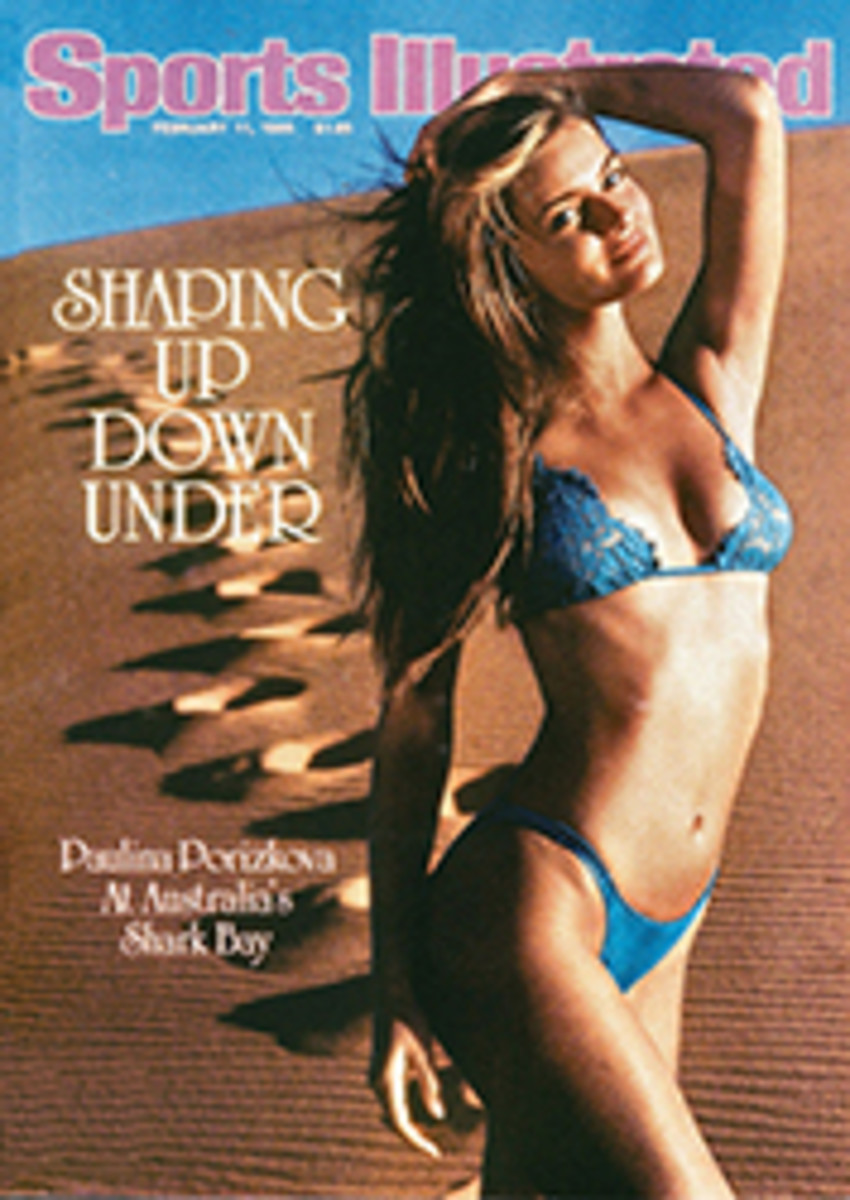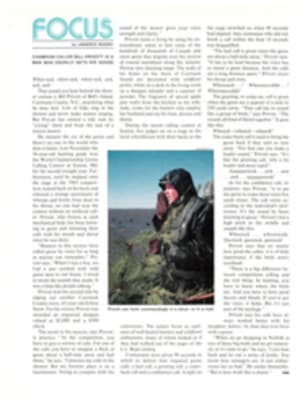
NBA PLAYERS COUNSEL LARRY FLEISHER WEARS A SECOND HAT AS AN AGENT
It looked more like the inside of a pro basketball wax museum than the foyer of a posh suburban New York home. Oscar Robertson waited, motionless in the dim light, while in a corner just across from him were Willis Reed and John Havlicek. And standing quietly in the entrance to the den was Dave DeBusschere. These pro greats, along with some 50 other people, were waiting to give Larry and Vicky Fleisher a surprise silver wedding anniversary party.
But there was one slight problem. It was pouring rain, and Fleisher, 54, general counsel for and head of the NBA Players Association, refused to leave his car and come inside until it let up. Absolutely not. It looked as if he was going to spoil his own party, but finally he was persuaded to cooperate and join the crowd. His reluctance to do what others wanted of him is exactly the same quality that has made him pro basketball's immovable mover and unshakable shaker for more than 20 years, and, since 1967, one of the game's most prominent player agents. "It's not stubbornness exactly," says Vicky Fleisher. "It's more like integrity and perseverance and doing what he believes is right."
In 1964, two years after he took over as general counsel, Fleisher decided that athletes whose average careers spanned four years should have a pension plan. So he helped organize a wildcat strike of the All-Star Game that year. The walkout was averted, but its threat snapped the league out of its three-year lethargy and won for the players the most rudimentary of retirement benefits.
Nor could Fleisher think of a good reason why a laborer should be limited in his choice of employer simply because his vineyard happened to have hoops atop its trellises. So in 1970, on behalf of the players, he filed a class-action suit attacking the NBA's reserve clause, which was a standard part of every contract that bound a player to a particular team in perpetuity unless that team chose to trade him. The 1976 Oscar Robertson Settlement Agreement grew out of that suit, establishing free agency for players and compensation for management. It was the first successful challenge to a professional-sports reserve clause, and four years later it led to unrestricted player movement, with no compensation.
Two years ago, as NBA owners considered methods of cutting costs, Fleisher saw no reason why players should return to management any of the benefits they'd won over the years. He threatened the league with a potentially debilitating midseason strike. Eventually, working behind the scenes with David Stern, then the league executive vice-president and now commissioner, the two hammered out a collective-bargaining agreement just days before the deadline. A.H. Raskin, the venerable labor correspondent for The New York Times, called the pact "statesmanlike...one of the most innovative in any area of labor-management relations."
Fleisher had taken the league to the brink, but he was now prepared to help bring it back. While the owners received the cap on salaries they had sought, the players got guarantees that no team would spend less than $3.4 million annually on its payroll.
In this era of six-figure player contracts and nine-figure television contracts, it's hard to believe that there was once a time when there was no union and NBA teams weren't even required to send trainers on road trips and could play an unlimited number of exhibition games. Average salaries, now the highest among the major pro teams, were once bottom scale. After the old Baltimore Bullets folded in 1955, it wasn't clear whether players would receive back pay. As a consequence, Bob Cousy helped form the Players Association. But initially it was a reckless organization. When Tom Heinsohn succeeded Cousy as union president, a friend recommended Fleisher, then a lawyer and tax accountant, as counsel. Fleisher signed on in 1962.
Today the Players Association has a staff of four with offices in Manhattan. For years Fleisher made the hour-long commute to the city by car from his rambling Tudor house in Chappaqua, N.Y., where he and Vicky raised their children, Marc, 30, now an entertainment lawyer in San Francisco; Eric, 28, a merchandise licenser in New York; David, 21, a senior at Washington University; and Nancy, 19, who is a sophomore at Vanderbilt University.
As a child Larry was a survivor, doted on by his mother, Claire, whose three other sons died shortly after birth as a result of a blood disorder. Morris Fleisher, his father, worked from 6 a.m. till two in the afternoon in the small printing shop he owned in Manhattan, returning by subway to their home in the Bronx soon after Larry was out of school. Like many of the Russian-Jewish immigrants of the era, Morris leaned to the left politically, and made sure his ten employees carried union cards. "He believed there was no employer in the world as good as a union," says his son. "No matter how reasonable or fair an employer is, if he gives his employees something, it's coming out of their pockets."
Life in the Fleishers' neighborhood, a middle-class section of the North Bronx, revolved around the park called The Reservoir Oval, where Larry discovered sports. But his parents made sure he developed his aptitude for numbers. He graduated from DeWitt Clinton High School at 16 and enrolled at New York University, studying accounting.
Three years later, in 1950, Fleisher entered Harvard Law School, where he quickly acquired a reputation as an organizer. He put together an intramural basketball team that included Derek Bok, current president of Harvard; Quentin Kopp, now a successful attorney and, in 1979, an unsuccessful San Francisco mayoral candidate; and H. Lee Sarokin, a federal district court judge in Newark. The law school all-stars once played on the undercard of a Celtics game. As a student Fleisher was solid but undisciplined. "Larry was a crammer," remembers Sarokin. "And cramming in law school is a lot different from cramming in college."
Fleisher's first client was Bill Bradley, who in 1967, two years out of Princeton and fresh from a Rhodes scholarship, retained him to negotiate his contract with the New York Knicks. Fleisher was then doubling as vice-president of Restaurant Associates, a management firm that runs such New York restaurants as The Four Seasons, Charley O's and Mamma Leone's.
The Bradley pact was by far the largest NBA player contract signed to that point, estimated at $750,000 over four years, and it started the trend toward astronomical player salaries. For Fleisher it led to contacts with other Knicks and, eventually, connections with college stars about to turn pro. Fleisher represents, or has represented, David Thompson, Bob Lanier, Paul Silas and Jim Paxson. He has remained close to most of his players, and it's said that he and writer John McPhee are among the most intimate advisers to Bradley, now a U.S. Senator from New Jersey. Fleisher has invested with several of his clients in a hotel on the Ivory Coast, and Havlicek has gone in with him on three Wendy's restaurants.
Like a Wendy's double, Fleisher is thickly put together and comes off as a square. But his midsection is solid from a regular regimen of squash, and his mind is a lode of labor law, accounting and basketball knowledge. "He's a very able negotiator," says Portland Trail Blazers owner Larry Weinberg, a member of the labor relations committee that helped work out the latest settlement. "In fact, one reason the league has gotten into difficulties is that Larry did too good a job of negotiating over the years."
Weinberg does not intend this as a compliment. "You have to leave enough on the other guy's table to keep him in business," he says.
Fleisher can be just as opinionated about the men who own the NBA franchises, many of whom are self-styled liberals. "Your only real costs are your players," he says. "There's something sick with a system in which someone can say 'I own Moses Malone.' Even if he paid $13.2 million for his services, he doesn't own him. What seems at first to be just semantics eventually pervades people's thinking."
But for their part, many owners feel that, as player agent and union head, Fleisher has conflicting interests. It's a charge that has dogged him for 15 years. One concern is that requests for player appearances and endorsements that routinely come into the Players Association office could be funneled to Fleisher's clients. More significant, it's been questioned whether a lawyer can represent the so-called superstars at the same time he's presumably bargaining for the interests of less talented players. Says Fred Slaughter, an agent, "Look at the players he represents. They're all at the top. He tends to negotiate collective bargaining settlements that are top-heavy elitist, if you will."
Sometimes Fleisher does find himself in paradoxical positions. Soon after negotiating boxcar figures with the Knicks for the services of free agent Marvin Webster in 1978, he criticized the huge compensation award the Seattle Super-Sonics received in return because he feared its size would inhibit teams from bidding for free agents. Said Boston Celtics president Red Auerbach, "Fleisher first extols the virtues of Webster, and Webster gets a fantastic contract, and then, as head of the Players Association, he turns around and says, 'Hey, he's not that good.' "
"The whole world knows about my situation, and I only represent players" Fleisher says. "There are people who represent both sides, labor and management, and I'd never do that. I know more than other agents know, which helps me do a better job." During informal sessions, initiated by Fleisher, the New York State Bar Association's ethics committee cleared him of any conflict of interest.
"It may appear that players have quite a lot of say in union affairs," says Rich Kelley, Utah's backup center. "But Larry Fleisher is the union."
"Even back in law school he wanted to do what he's doing today," says Kopp, the intramural teammate, who remembers how he and Fleisher cornered Syracuse's Dolph Schayes outside the locker room after a Nats-Celtics game at Boston Garden and sidled him up to a concession stand for a round of beers, for which Fleisher picked up the tab. After Schayes had quaffed his, he began tapping his empty cup expectantly. "And Larry coughed up again," Kopp recalls.
More than 30 years later, that impecunious law student has helped set up NBA players like Schayes's son Danny with a lot more than beer money.
THREE PHOTOS
LANE STEWART
Fleisher has always been the No. 1 player representative for Bradley (top) and DeBusschere.

